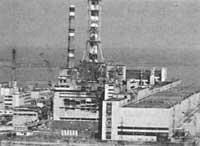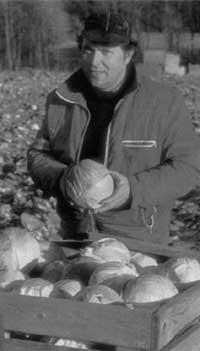Microorganisms, key against chemical pollution.
2000/10/08 Mendiburu, Joana - Elhuyar Zientziaren Komunikazioa
use of biosensors to detect contamination is not new. For example, the miners introduced canaries into the mines to detect carbon monoxide and Greek. Trout is also used to detect chemical contamination in the water, since, as is known, this fish has great demands regarding the quality of the place of residence. Currently, the techniques used to detect and eliminate chemical contamination are based on the same idea, but instead of using birds or trout, microorganisms are used.
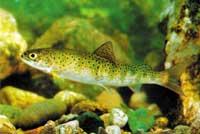
To
eliminate contamination, first of all it is necessary to detect it accurately, and often that is where the spoon is located. In fact, the techniques used so far for detection took time and were costly. New technologies, however, take advantage of the light that some bacteria provide in the place of contamination. This light is proportional to pollution, that is, more pollution, more intense. It allows a significant and rapid diagnosis of the quality of the medium.
Researchers at the Oak Ridge National Laboratory in the United States use silicon chip linked bacteria to determine if any remains remain after cleaning toxic waste. Engineers have used a genetically modified microorganism to locate traces of naphthalene, one of the components of jet aircraft fuel. In the presence of this chemical compound, the microorganism provides a bluish luminosity. The bacteria are placed on the porous bark of the chips and when they begin to light up, the chip emits alarm. Researchers expect these chips to be placed at all contaminated sites. In this way, the use of a microorganism for each contaminant will allow to detect all types of pollution in a short time and at low cost.
Ability
of microorganisms to eliminate pollution
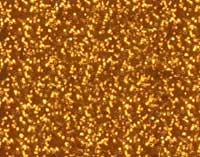
Microorganisms are
the most primitive organisms on this planet, and thanks to technological advances in the field of microbiology, deeper and deeper research is carried out. These microorganisms have a property that helps reduce the use and contamination of chemicals. In fact, microorganisms not only detect contamination but destroy it. Many of the synthetic materials can be toxic to plants and animals, but very few cannot be broken down by microorganisms. In addition to this activity, bacteria have another characteristic. As the name of microorganisms itself clearly indicates, they are small in size, which facilitates their dispersion. In addition, they adapt easily to the circumstances that generate new types of pollution. For this reason, even though pollution surprises them, they have the ability to quickly develop their capacity and can reach the pollution area shortly.
Although microorganisms grow rapidly and have a high dispersion capacity, their effectiveness may fail. Therefore, it can happen that a soil contaminated for a long time still has a lamentable state. The causes of this error can be complex. On the one hand, the shortage of microorganisms or the genetics of microorganisms can be inadequate. On the other hand, pollution itself can be the cause of this error. This is because if the pollution rate is too high, it can be toxic to microorganisms. Pollution can also be too low to trigger the degradation process. Conditions in the environment, such as acidity, humidity or food, may also be inadequate for the development or activity of microorganisms. And when living conditions are not the best, the activity of microorganisms is not effective.
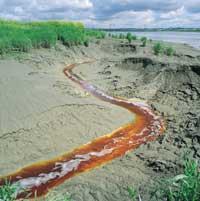
The aim of the research is to analyze microorganisms and identify the most appropriate conditions for the elimination process. As for environmental conditions, the most important factors to consider are acidity and food. However, to investigate how these parameters affect, it is necessary to detect the generator gene of the enzyme that eliminates contamination. The first work of the researchers was, therefore, the creation of a test to identify this gene. According to them, advances in microbiology have been mandatory. Once confirmed the presence of this gene, they have been able to investigate the consequences of a change of parameters.
Studies and progress
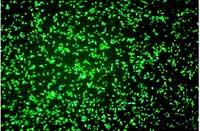
These investigations have also brought new advances. Researchers have designed biosensors capable of imitating the activity of these microorganisms. In the last four years they have been used in contaminated industrial places.For use in other applications, we are still working on the diffusion of the variety of biosensors. A new family of biosensors is being created based on changes in antibody parts. Through the sensitivity and specifications of imunological systems, they will create new bacteria that detect certain types of pollution, drugs or viruses.
This technology allows to eliminate environmental pollution in a fast, effective and easy to use way. In addition, for animal advocates it will certainly be good news, since from now on no more canaries and trout will be used to do the tests.
The
problem of soils comes from the 70s
Along with soil, air and water, it is the support of all living beings on earth. The three elements are completely united with each other. Soil is a relatively weak environment and has limited capacity to withstand a growing impact of human activity.
Undoubtedly, human activities based on soil, agriculture and industry, forestry, large infrastructure, cities and towns, etc., have caused serious changes.
The
issue of soil pollution was published in the 1970s, when problems appeared in highly industrialized cities. It was then demonstrated that the presence of foreign, toxic substances in the soil negatively influences human health. It also detected the possibility that buildings and infrastructures that are built on contaminated soils cause disease. Finally, the need to take into account the condition to ecosystems was stressed. The biggest problem in contaminated soils in the Basque Country is in Bizkaia, where companies that produced a toxic insecticide called lindane contaminated thousands of tons of land.
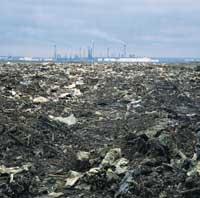
The main pollutants of
the soil are metals, inorganic compounds that contain anions (such as cyanide), organic compounds, oils and tar, toxic gases, explosives and suffocating, combustible substances, perishable materials and hazardous waste.
For
the analysis and measurement of the degree of contamination of soils, the characteristics of the contaminated site must be taken into account, such as degree of industrialization, type of industry and agriculture, geological and hydrological structure, type of soil, orography and climatology, population density, etc.
Published in the supplement Natura de Gara

Gai honi buruzko eduki gehiago
Elhuyarrek garatutako teknologia




